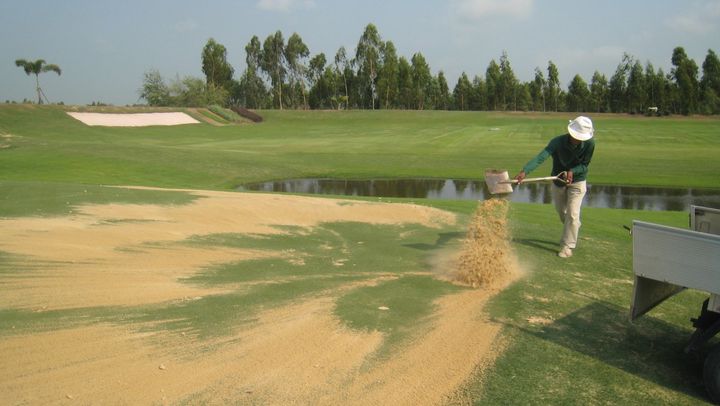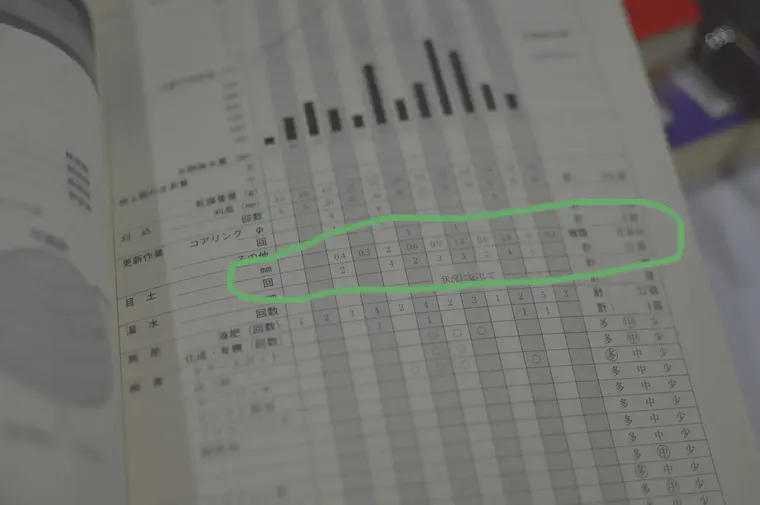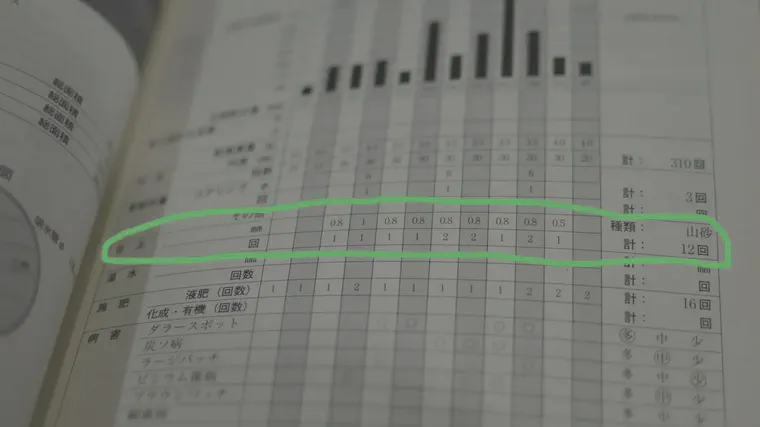Three reasons why sand topdressing is best expressed as a depth

Here are three reasons I think it is best to express sand topdressing applied to turfgrass as a depth.
Depth of sand standardizes the amount applied, independent of the mass of the sand or the area over which the sand was spread.
Sand is generally applied for the purpose of diluting soil organic matter; the sand expressed as a depth is in units that are directly comparable to organic matter (OM). For example, if total organic matter in the top 2 cm (OMT2) is at 8% by mass, adding 1 mm of sand will immediately reduce that by about 1/20th—after adding 1 mm of sand the total organic matter in the top 2 cm will be approximately 7.6%. The about and approximately here are because organic matter % in the soil is usually expressed as mass, and the sand expressed as depth is explicitly a volume divided by area. Also, the soil mass depends on how much organic matter is present and on the bulk density of the organic matter. I’ll write more about this sometime. In the meantime, you might find it useful, as I do, to think that adding 10 mm of sand to a 20 mm depth of soil will cut the organic matter in half.
Communication of topdressing amounts in the same, standardized unit of depth (mm or inches), makes it easy to understand how others are getting the desired results at their location.
I looked at a few articles and messages and tweets and noted the units that I found for sand topdressing rates:
- depth (mm)
- ft3/1,000 ft2
- lbs/green
- tons per acre
- tons
- tonnes
- tonnes/ha
- tons/ha
- lbs/1,000 ft2
- weekly dusting
- as needed
- tons per 1,000 ft2
- tonnes/green
Surprisingly, I didn’t find any units of kg/ha, but I expect some out there are using that too.
I prefer depth for the three reasons listed above. Depth is directly related to the desired result. Depth is also easy for anyone to understand because it already adjusts for the area to which the sand was applied.
Like the surprisingly useful #clipvol, sand topdressing by depth is another thing I’ve learned from greenkeepers in Japan.


For more see: